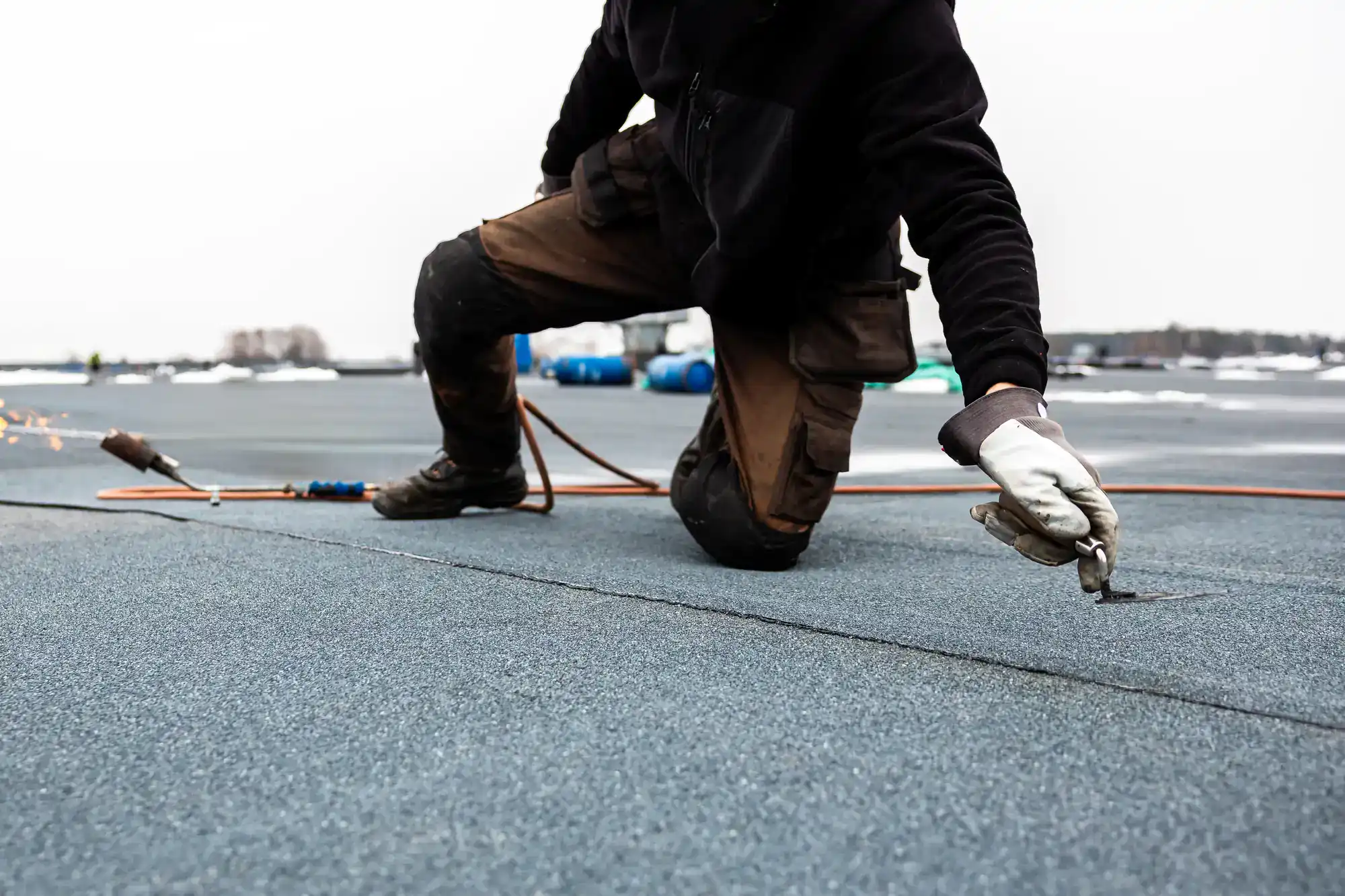
Hear from Our Customers
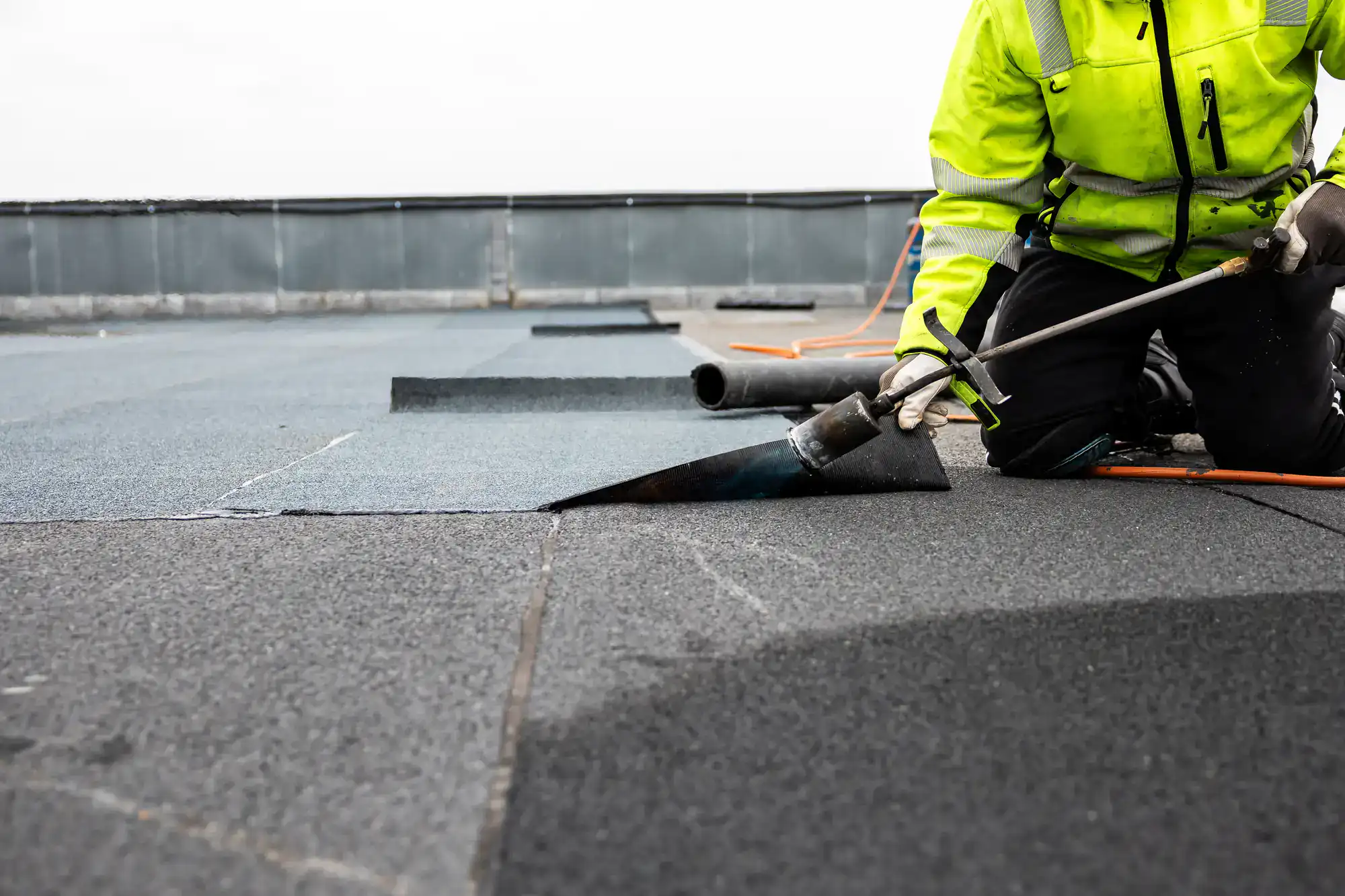
You’re dealing with a flat roof that’s supposed to protect your property, not cause headaches every time it rains. When your roof works the way it should, you stop checking the ceiling for new stains. You stop worrying about whether the next storm will flood your building.
That’s what proper flat roofing delivers. No more emergency buckets. No more cancelled meetings because of leaks. No more expensive repairs that could have been prevented.
Your building stays dry, your operations run smoothly, and you finally have one less thing to stress about. That’s the difference between a roof that’s just patched together and one that’s built right from the start.
We’ve been solving flat roof problems for North Hempstead property owners who need more than quick fixes. We understand that Long Island weather doesn’t mess around—heavy snow loads, driving rain, and temperature swings that can crack inferior roofing systems.
Most contractors treat flat roofs like an afterthought. We built our reputation specifically on getting them right. Whether you’re managing a commercial building in Manhasset or dealing with a residential flat roof in Great Neck, we know exactly what works in this climate.
You don’t need another contractor who shows up, patches the obvious problem, and leaves you hoping for the best. You need specialists who understand that flat roofing is a completely different skill set.
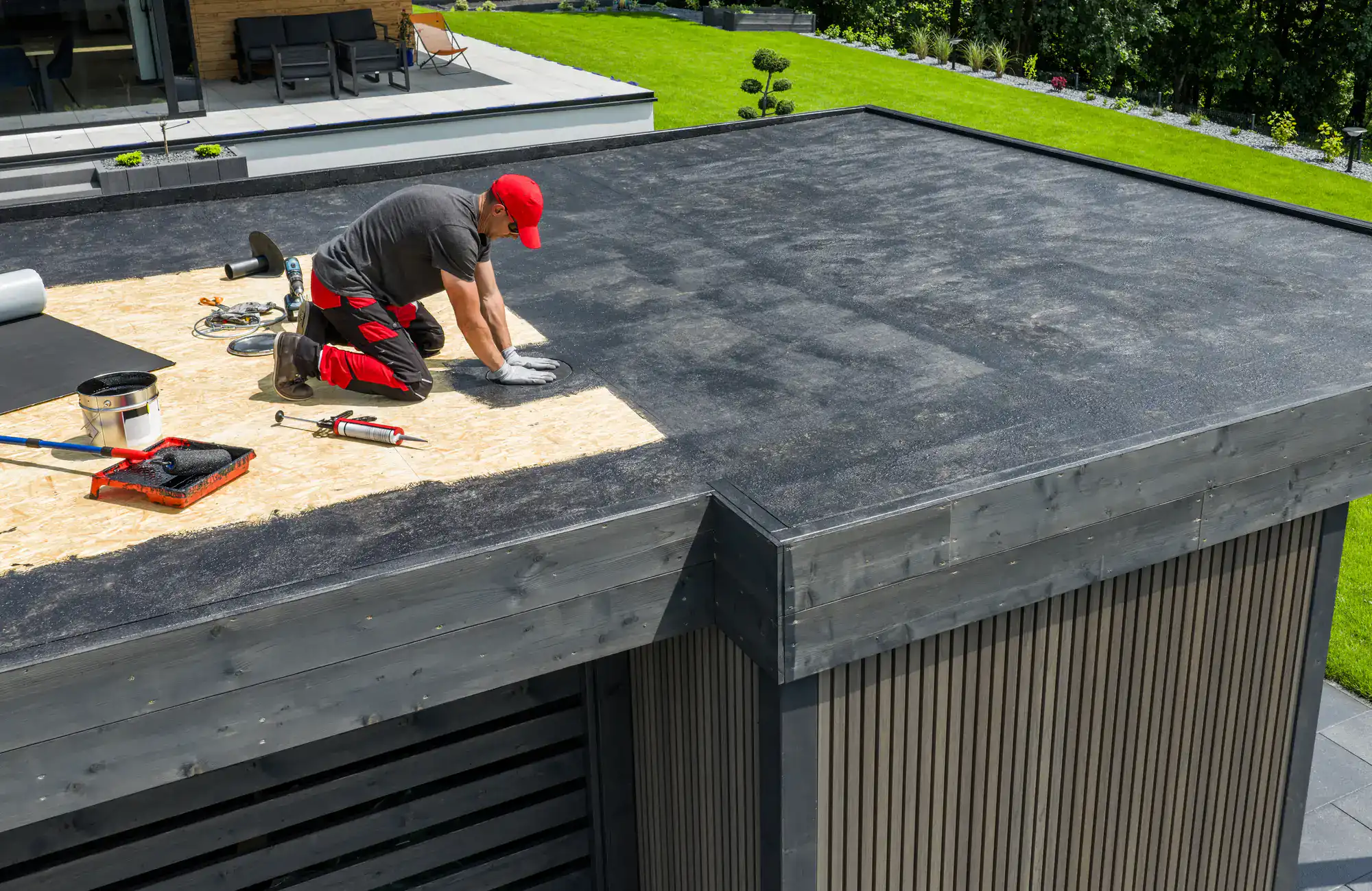
First, we inspect your entire roofing system—not just the obvious problem spots. Most leaks start in places you’d never think to check, and we find them before they become expensive disasters.
Next, we explain what’s actually wrong and what your options are. No pressure, no upselling. Just clear information about repair versus replacement, material choices like TPO or EPDM, and realistic timelines.
Then we get to work with the right materials for your specific situation. Commercial buildings get commercial-grade solutions. Residential properties get systems designed for homes. We handle everything from tear-off to final cleanup, so you don’t have to manage multiple contractors or worry about corners being cut.
When we’re done, you get a roof that handles whatever weather comes next—and documentation of exactly what we did, so you know what you’re covered for.
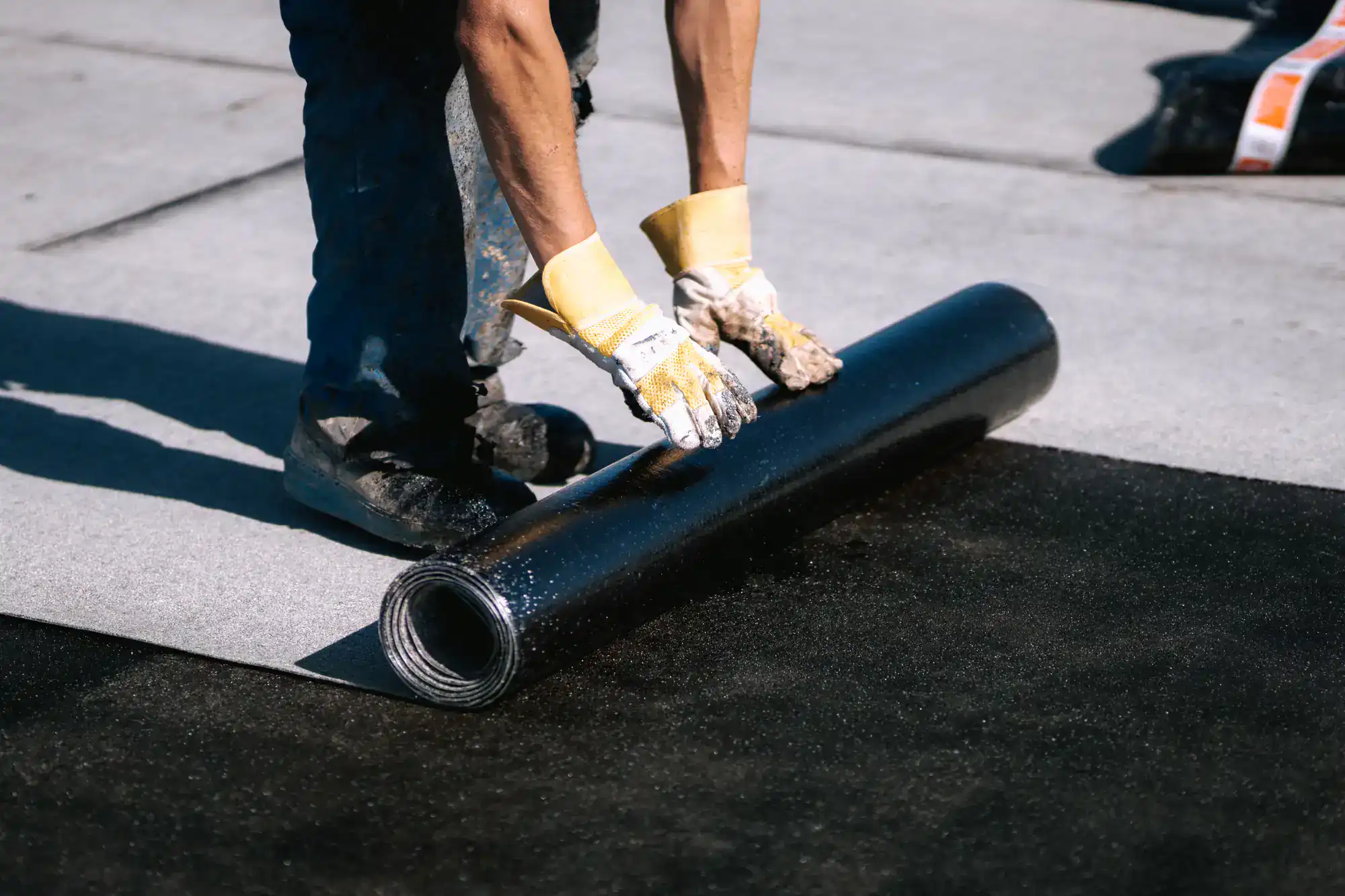
Ready to get started?
We handle every type of flat roofing system you’ll find in North Hempstead. TPO roofing for energy efficiency and durability. EPDM rubber roofing for proven long-term performance. Modified bitumen systems when you need maximum weather resistance.
Our leak detection services use thermal imaging and moisture meters to find problems before they show up as ceiling stains. We provide flat roof coating and waterproofing that extends your roof’s life without the cost of full replacement.
For North Hempstead’s mix of commercial and residential properties, we understand the unique challenges. Commercial buildings need systems that handle foot traffic and equipment loads. Residential flat roofs require solutions that complement your home’s design while providing reliable protection. Low-slope roofing gets special attention because drainage issues can destroy even the best materials if the installation isn’t done right.
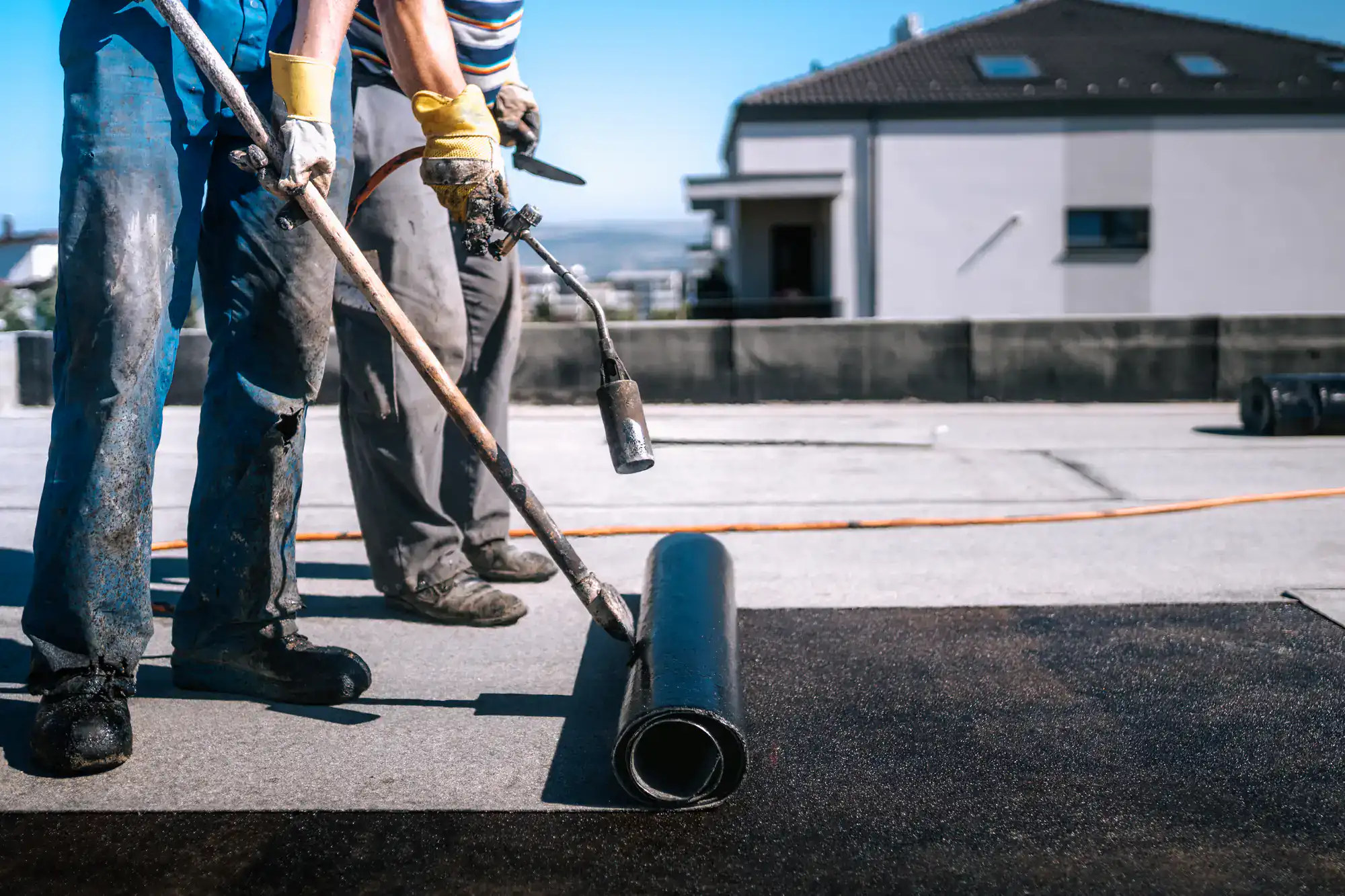
A properly installed TPO roof typically lasts 15-20 years in Long Island’s climate, but that depends entirely on the installation quality and regular maintenance. TPO handles temperature fluctuations well, which is crucial here since we see everything from sub-zero winters to 90-degree summers.
The key is proper seam welding and adequate drainage. Poor installation can cut that lifespan in half, while quality work with regular inspections can push it beyond 20 years. We see TPO roofs we installed 15 years ago that still look and perform like new because they were done right the first time.
EPDM is a black rubber membrane that’s been around for decades—it’s proven, reliable, and handles extreme weather well. TPO is a white thermoplastic that reflects heat better, potentially reducing cooling costs, but it’s newer technology with less long-term data.
For North Hempstead properties, both work well, but the choice often comes down to your priorities. If energy efficiency is important, TPO’s reflective surface gives you an edge. If you want the most proven track record, EPDM has been protecting buildings here for 40+ years. Both require skilled installation to perform properly, which is where most problems start.
We use thermal imaging cameras that show temperature differences in your roof surface—wet insulation shows up as cooler spots that indicate leaks before you see water inside. We also use electronic moisture detection equipment that can pinpoint exactly where water is getting in.
Most flat roof leaks start small and spread through the roof system before you notice interior damage. By the time you see ceiling stains, the problem has usually been there for months. Our detection methods find these issues early, when repairs are simple and inexpensive instead of major reconstruction projects.
If your roof is under 10 years old and the leaks are localized, repair usually makes sense. If you’re dealing with multiple leak points, recurring problems, or a roof over 15 years old, replacement is often more cost-effective long-term.
We look at the overall condition, not just the obvious problems. A roof with good bones but isolated damage gets repaired. A roof with systemic issues—like widespread membrane deterioration or insulation problems—needs replacement. We’ll walk the roof with you and show you exactly what we’re seeing, so you can make an informed decision based on your building’s actual condition.
Simple leak repairs typically run $300-800, depending on the size and accessibility. Larger repairs involving membrane replacement or drainage improvements range from $1,500-5,000. Full roof replacement varies widely based on size, materials, and building complexity.
The real cost isn’t the repair itself—it’s what happens if you don’t fix it properly. We’ve seen $500 leaks turn into $15,000 reconstruction projects because they weren’t addressed correctly. Getting an accurate assessment upfront saves money and prevents the kind of damage that insurance companies love to argue about.
Ponding water is the biggest issue we see—Long Island’s frequent storms combined with inadequate drainage create standing water that eventually finds its way through any roofing system. Seam failures are also common, especially on roofs that weren’t properly welded during installation.
Winter freeze-thaw cycles cause expansion and contraction that can crack membranes and open up penetration points around vents and equipment. We also see a lot of damage from HVAC contractors and other trades who walk on roofs without understanding how to avoid punctures. Most of these problems are preventable with proper installation and regular maintenance, which is why we focus on getting it right from the start.
Other Services we provide in North Hempstead